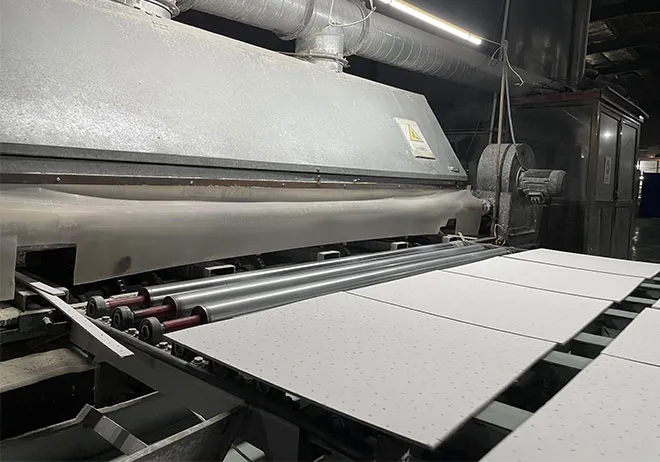Dec . 22, 2024 04:45 Back to list
ceiling inspection panel
Understanding Ceiling Inspection Panels Importance, Types, and Installation
In the realm of building construction and renovation, ceiling inspection panels are often an overlooked but crucial component. These panels provide essential access points to the spaces between ceilings and floors, most notably in commercial buildings, industrial facilities, and various types of infrastructure. They are vital for maintenance, inspection, and ensuring the safety and functionality of the systems concealed above ceilings, such as electrical wiring, plumbing, and HVAC (Heating, Ventilation, and Air Conditioning).
Importance of Ceiling Inspection Panels
Ceiling inspection panels serve several important functions. First and foremost, they allow for easy access to the concealed systems that support a building’s operations. Regular inspections of these areas are essential to identify potential hazards, perform maintenance, and comply with safety regulations. For example, HVAC systems often require routine maintenance to operate efficiently. Without access panels, these tasks could become complicated, expensive, and time-consuming.
Moreover, ceiling inspection panels contribute significantly to the overall safety of a building. In the case of emergencies such as water leaks, electrical failures, or fire hazards, having an easily accessible inspection panel can expedite response times by allowing maintenance personnel to quickly assess and address the situation. This can mitigate damage and potentially save lives.
Types of Ceiling Inspection Panels
There are several types of ceiling inspection panels available, each designed to meet specific needs
. The most common types include1. Flanged Access Panels These panels are surrounded by a flange that can provide a secure fit within a suspended ceiling. They can be made from various materials, including metal and plastic, offering different levels of durability.
2. Flush Access Panels Designed to be almost invisible when installed, flush access panels blend seamlessly into the ceiling. They are often used in high-profile environments where aesthetics are a concern. These panels can be painted to match the ceiling, making them an ideal choice for commercial spaces like offices and hotels.
ceiling inspection panel

3. Fire-Rated Access Panels In buildings where fire safety is paramount, fire-rated inspection panels are a must. These are specially designed to resist the spread of fire and maintain the integrity of fire-rated ceilings.
4. Acoustic Access Panels For environments where sound control is necessary, acoustic panels are designed to minimize sound transfer while allowing for access to the ceiling space. This type is commonly found in theaters or recording studios.
5. Waterproof Access Panels In locations where moisture is a concern, such as bathrooms or kitchens, waterproof access panels are designed to prevent water ingress, protecting the integrity of the hidden systems.
Installation Considerations
When it comes to installing ceiling inspection panels, several factors should be considered to ensure functionality and compliance with building codes. The positioning of the panels is critical; they must be installed where access is needed most, and ideally in locations that are unobtrusive.
Additionally, it is essential to select panels that are appropriate for the building's specific requirements, including considerations for fire safety, sound control, and hygienic standards, especially in healthcare settings. The installation process itself should be carried out by professionals who understand the structural elements of the ceiling and the requirements of the systems hidden above.
Conclusion
In conclusion, ceiling inspection panels play an indispensable role in building maintenance and safety. They are integral to ensuring easy access to crucial systems while enhancing the functionality and efficiency of the building. Whether a flush panel that enhances decor or a fire-rated panel that addresses safety regulations, choosing the right type of ceiling inspection panel is vital for both residential and commercial spaces. As buildings become more complex with advanced systems, the need for efficient access solutions like inspection panels will only grow, emphasizing their importance in modern construction practices.
-
Quality Ceiling Trap Doors & Access Panels | Easy & Secure AccessNewsAug.30,2025
-
Durable Ceiling T Grid Systems | Easy InstallationNewsAug.29,2025
-
PVC Gypsum Ceiling: Durable, Laminated Tiles for Modern SpacesNewsAug.28,2025
-
Pvc Gypsum Ceiling Is DurableNewsAug.21,2025
-
Mineral Fiber Board Is DurableNewsAug.21,2025
-
Ceiling Tile Clip Reusable DesignNewsAug.21,2025







